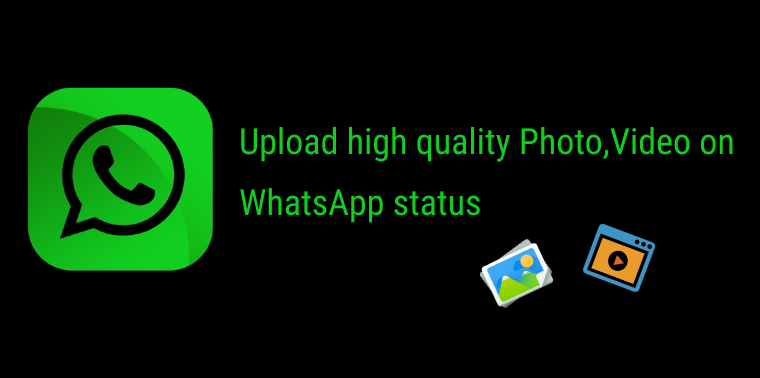Mobile Mastery: Transforming Work Habits with 8 iOS Productivity Techniques

WhatsApp is currently the most popular messaging application available, and it can be used on mobile devices as well as desktop computers to make voice calls, video calls, send messages, share photos and videos, and more. It's possible that while using WhatsApp, you've already shared photographs and videos with your contacts through chats and the Whatsapp Status feature. If the answer is yes, your buddy will likely blame you for sending or sharing low-quality images or videos and will ask you to email the photos again so that they can be resent in a higher quality.
Actually, it's not your fault; Whatsapp automatically compresses any media before saving it to storage, including images and videos. Therefore, Whatsapp is the one responsible for all of the actions related to the compression of the image. If you find that this is an issue for you, then this post will help you through the process of uploading high-quality films and photographs to WhatsApp so that you can wow your friend.
The quality of an image is determined by two factors: the quality of the camera and the quality of the image processing. The first factor is highly variable and can be caused by a number of different factors. The app itself is the second factor. The app will either process the image or filter it first. In the latter case, it will employ an optical flow filter, which reduces sharpness and color saturation even further.
Not only WhatsApp but also other messaging apps such as Messenger, do the same thing. There could be several reasons for the poor quality of images on WhatsApp, some of which are listed below.
Before doing any of the below mention steps you have to be sure that you have set Photo Upload quality to Best Quality via settings. Setting the best quality does not imply sending the original full-resolution image. Instead, you'll only be able to send the highest quality that WhatsApp supports, which is all we can do. This new WhatsApp feature allows you to send higher-resolution images.
The steps are as follows and apply for both android and iOS.
1 At the top right corner, click on 3 dots for android, and for iOS click on 3 dots located in the lower right corner.
2 Then Tab to Settings
3 Next screen tab to Storage and data
4 Tab to Photo upload quality at the bottom.
5 Then you will see 3 options, first Auto, second Best quality and third we have Data saver.
If you are serious about photo quality then set it to the Best quality.
Now let's look at methods for Sending High-Quality Media on Whatsapp
Note that Whatsapp is not the best app for sharing high-quality images but if it is an emergency you can use it.
Also, it should be noted that When you send any image either png, jpeg, webp, BMP, tiff, gif, etc in a normal way then it will automatically convert into a jpeg file format which is the default behavior. Whatsapp does this because the jpg/jpeg file is a compressed file and the png is a non-compressed file.
We can send pictures and videos in Whatapps as documents. Whatsapp uses no compression while sharing media as documents.
Whatapps developed these features for sending documents like pdf documents, word documents, etc to the users. But you can use it for pictures and videos as well.
You can send only 100MB size media (pictures, pdfs, docs, videos) using document features. This much space is enough for sending single pictures and some videos which is less than 100MB.
Steps:
Here, I am using an android phone for performing these actions:
1 Open Whatsapp and go to Chat Tab and select Recipient to whom you want to share media(videos, pictures).

2 Click on Attach icon
3 Then click on the Document icon

4 Select Browse other docs

5 Choose your media(images, videos) from the list and click on send.

Then will get your media as shown below.
Here, the Actual size of the image on phone is 4.9 MB and when I upload this photo on WhatsApp as a document then it is sent as it is.No compression performed here.
Let's compare an image sent by using document options and another image sent using general ways.

1 Rename your file extension to something like .pdf or .doc.
For example, I want to send a high-quality image say abc.jpg image then rename it to abc.doc.
2 Send it via the document option.
3 Recipient rename it back to .jpg.
Ex. The recipient received it as abc.doc, then they just have to rename it as abc.jpg.
Note that you can do it for jpeg, png, gif, and BMP file extension as well.
By Using File Compression apps like ZArchiver, WinZip, xzip, and RAR you can first compress your images into finally converted into Zip files and then send that zip file to the recipient, then the recipient will unzip those files and open them.
In this way, you can send multiple pictures(images), videos, and documents.
FAQ:
Ans: Any message and images send via Whatsapp are secure. End-to-end encryption is used to send messages from the sender to the recipient on WhatsApp.Your images and messages cannot even see by Whatsapp because of end-to-end encryptions.
Only you and the recipient can see WhatsApp messages and photos.
Ans: Yes Whatsapp uses lossy compression for compressing the images. Whatsapp compresses the images before sending them to their server.
Ans: If you upload any image either png, tiff, or Gif, Whatsapp changes the file extension to.jpeg because jpeg is one of the best-compressed forms of an image where a tiny reduction of quality cannot be noticeable.
This is not only as common as JPEG images, but also because WhatsApp is primarily a mobile application and images are captured as JPEG by default on most mobile devices.
